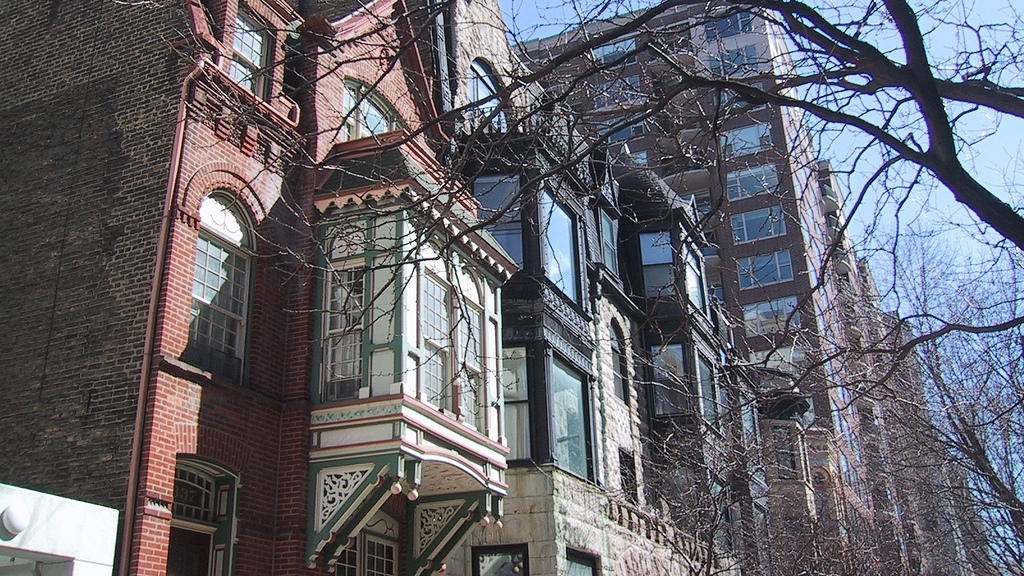Homes for a Changing Region Series: Unique Solutions for Unique Communities

This post is the fourth post in a series of five that Metropolitan Planning Council (MPC) is running on its Homes for a Changing Region project, a collaboration with Chicago Metropolitan Agency for Planning and Metropolitan Mayors Caucus that uses demographic projections and housing stock studies to inform housing plans for various Chicagoland municipalities.
To view the other posts in the series, please see below.
As stated in this series’ first post, one of our goals for following up with some of the early Homes communities was to identify trends that were affecting the housing markets across most—if not all—of the towns we looked at. The previous two posts, one focused on transit-oriented development and the other on “housing for the life cycle,” highlighted two such prevalent themes. But while all five communities shared similarities in some of their work, Homes also made distinct recommendations to each one based off of their particular demographics.
Although this revelation may have initially caused our eyebrows to rise, upon further reflection it was not at all surprising. The reason that Homes has always studied communities individually is that, no matter what trends hold true across the region, every town is different in some way. Unique communities require unique housing solutions, so while it may seem counterintuitive, the third big “trend” of this series is that no two communities are the same. And Homes for a Changing Region tailors each plan to reflect those individual circumstances.
Town-specific housing needs and solutions can still take place within the wider trends discussed in the previous two posts. For example, take Aurora’s approach to transit-oriented development. As the second largest city in Illinois, Aurora is not even considered a Chicago suburb; it is its own big city. The Homes project recognized that, and recommended mid-to-high-rise housing developments near train stations.
“There’s some other places that I’m sure are scared to hear the word ‘mid-rise.’ And we’re not,” said Bill Wiet, Aurora’s chief development officer. “If it’s properly located and properly amenitized, a mid or high-rise does not scare the city of Aurora. And [the Homes] report validates that.”
“The report kind of blesses our thinking, the higher the better for us—we’re a city, not a suburb.”
Essentially, Aurora is enacting strategies from the larger trend of transit-oriented development with a solution suited to its unique characteristics. In this way, the Homes recommendations have helped the city be proactive about creating an attractive housing stock for residents. This mindset was consistent through every community we revisited.
Not everyone embraces (or necessarily should embrace) height as Aurora did, but more are recognizing the need for density—particularly as Homes shows predicted increases of seniors and millennials in the housing market, and both of those demographics tend to prefer more compact lifestyles. Plainfield, a far southwest suburb, has focused on increasing its density by allowing smaller homes and promoting infill development rather than “leapfrogging” development out into the cornfields. In other words, new development must fill the gaps that already exist in its built-out areas, rather than more distant locations that would further strain municipal budgets with new infrastructure costs. Additionally, the village has taken the initiative to create more affordable housing and has waived most of its impact fees. Plainfield was formerly charging developers $35,000 per home in impact fees at the peak of the housing market, but as Village Planner Mike Garrigan said, “at the end of the day, you can’t provide attainable or affordable housing until you make it more attainable with regards to impact fees.”
Blue Island, as a suburb with a robust stock of older apartments, is focusing on rehabbing them. Unlike many suburbs farther out from Chicago, Blue Island does not have room to expand outwards. By rehabbing its distressed older apartments, the city can create “new” housing within existing infrastructure, actively catering to its population changes with improved density. Blue Island is also building off a unique asset by promoting development and recreational activities along the Cal-Sag channel waterfront, which was a Homes recommendation.
Oak Forest is taking advantage of its natural resources as well—it has the unique circumstances of being two-thirds surrounded by forest preserves, and is trying to attract new residents with that nearby natural beauty. The town’s new marketing campaign aims to attract younger residents (a group that the Homes data suggested it needed to accommodate) with transit-oriented development by its new train station, but points out that the easy access to nature is what really sets it apart from other suburbs. Once again, it is a case of a community proactively trying to spur growth.
Gurnee, which benefits from a large job base, is trying to improve its workforce housing and implement Bus Rapid Transit to move that workforce between their homes and their places of employment. The Homes data suggest that smaller-scale housing is one area that Gurnee will need to improve in order to achieve housing balance and keep its workforce local in the future. It has worked toward this, in part, by standing up to developers who often try to push their own agendas. “We have lots of builders always coming in and telling us, there’s just this huge pent up demand for new construction and they want to build McMansions,” said Gurnee Mayor Krysti Kovarik. “And I [say], no, what I need is some housing for downsizing… We always go back to Homes for a Changing Region. That makes us think forward instead of just today.”
All of these examples were unique amongst the five study locations, and they stress a crucial point: while Homes for a Changing Region promotes balanced housing for all communities, the path to balance is different in every case. There is no one-size-fits-all solution that works everywhere, and recognizing that is vital in planning. Identifying larger trends is still very important and valuable, of course—otherwise we wouldn’t be running this blog series. But in order to maximize effectiveness in planning for those trends, communities need to mold solutions to fit their individual circumstances.
Each community has a unique population with unique needs. Proactive planning, like Homes for a Changing Region, that takes control of the process and develops real solutions for current and future housing challenges is key to a durable, economically and socially vibrant community.
